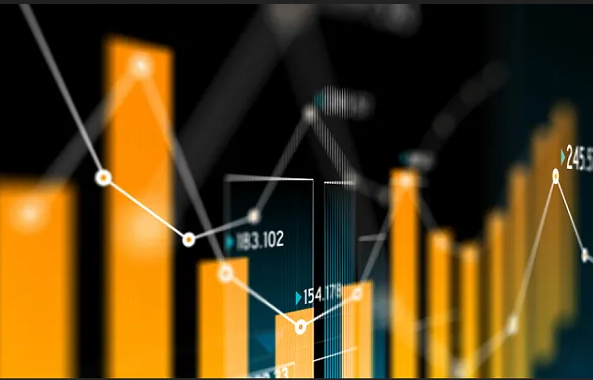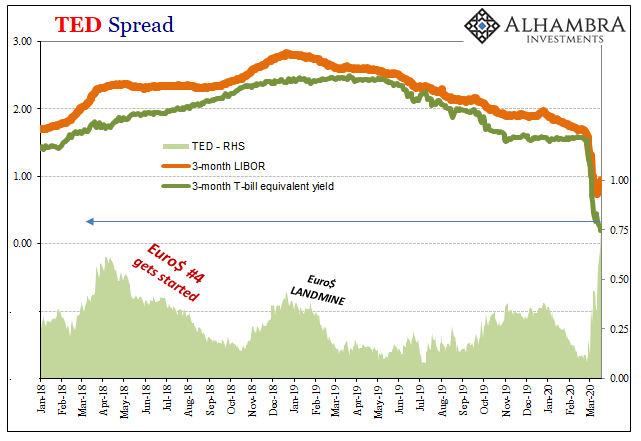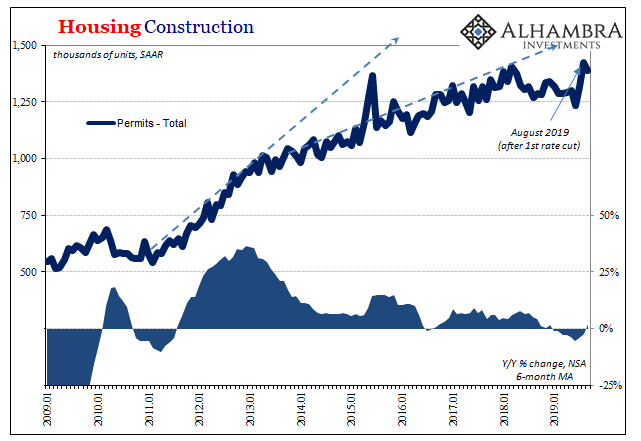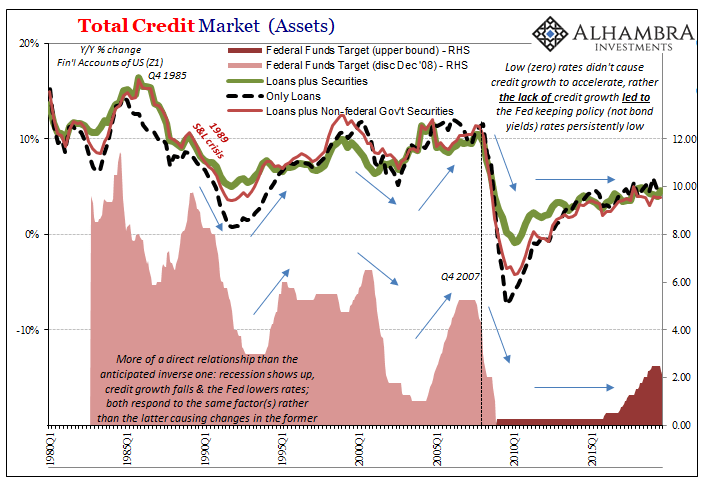Stocks took another beating last week as the scope of the coronavirus shutdown started to sink in. The S&P 500 was down 15% last week with most of that coming on Monday after the Fed’s emergency rate cuts. Our accounts performed much better than that, but were still down on the week as corporate and municipal bonds continued to get marked down. Municipals recovered slightly at the end of the week as the Fed announced they would be buying highly-rated bonds with maturities up to a year. The bill being considered in Congress right now would authorize the Fed to purchase corporate debt as well, but as of now, the bill is still being negotiated and there is considerable uncertainty about what its final makeup will look like. We are at a pivotal moment and dependent
Topics:
Joseph Y. Calhoun considers the following as important: 5.) Alhambra Investments, bonds, commodities, currencies, economy, Featured, Federal Reserve/Monetary Policy, Markets, newsletter, Real estate, Special Reports, stocks, Taxes/Fiscal Policy
This could be interesting, too:
Nachrichten Ticker - www.finanzen.ch writes Die Performance der Kryptowährungen in KW 9: Das hat sich bei Bitcoin, Ether & Co. getan
Nachrichten Ticker - www.finanzen.ch writes Wer verbirgt sich hinter der Ethereum-Technologie?
Martin Hartmann writes Eine Analyse nach den Lehren von Milton Friedman
Marc Chandler writes March 2025 Monthly

Stocks took another beating last week as the scope of the coronavirus shutdown started to sink in. The S&P 500 was down 15% last week with most of that coming on Monday after the Fed’s emergency rate cuts. Our accounts performed much better than that, but were still down on the week as corporate and municipal bonds continued to get marked down. Municipals recovered slightly at the end of the week as the Fed announced they would be buying highly-rated bonds with maturities up to a year.
The bill being considered in Congress right now would authorize the Fed to purchase corporate debt as well, but as of now, the bill is still being negotiated and there is considerable uncertainty about what its final makeup will look like. We are at a pivotal moment and dependent on the politicians at this point, certainly not a comfortable position. As I write this, stocks are looking down another 5% in the morning.
We took action last week to further de-risk our portfolios and our stock exposure for most accounts is less than 20% of the portfolio. We have raised the allocation to gold slightly as gold has been outperforming stocks since the beginning of this crisis, down about a third as much as the S&P 500. We believe that relative performance is likely to continue with gold turning higher as it did at a certain point in the 2008 crisis.
The pace of economic shutdown accelerated dramatically last week and frankly, the wonder is that stocks weren’t down even more. The restrictions placed on individuals and businesses in the most affected states are severe and extreme. New York and California are essentially shut down with only “essential” businesses operating. What qualifies as “essential” is not exactly clear but the empty streets of NYC pretty much tell you what you need to know.
The economy is going to contract by a large amount in this quarter. Congress and the Fed have the ability to cushion the blow to individuals and businesses but the help needs to come quick. Layoffs are moving faster than the negotiations and the longer they fiddle over the details, the greater the long-term damage.
I do not know if the legislation being considered will be effective and frankly, I’m not even sure what success would look like. The economy is going to contract in a large way regardless of what they do now. The debate now is about what happens after that contraction. If Congress acts responsibly, the downturn could be short-lived; if not we could be looking at a very long recovery.
Like many others, I’ve done some back-of-the-envelope math and the numbers are enormous. Personal income for the US is about $19 trillion annualized or roughly $1.6 trillion per month. Whatever passes Congress needs to replace some percentage of that total for every month we stay shut down. What percentage? I have no idea but let’s just round it off and call it $1 trillion per month. And that may just be for starters. I’d prefer to see something really simple and clean emerge from the negotiations but that is probably too much to ask.
There doesn’t seem to be much doubt about how all this will get financed. There is sufficient demand for Treasuries at this point to fund just about anything – everyone needs safe paper – but sucking several trillion dollars out of the private economy is not going to stimulate anything. So, the Fed will finance this, one way or another. One would certainly think that will be inflationary at some point in the future but that is not much of a concern at the moment. The Fed’s bigger fear right now – or at least I sure hope so – is deflation in a highly indebted society. With our debt levels, we need inflation to erode the real cost of paying them off. Can the Fed do enough to raise inflation expectations? Will they? I sure hope so; the alternative is grim.
Meanwhile, the news on the virus is, as anticipated, getting worse by the day. Ramping up testing was – is – necessary but it also means the number of known cases is now rising very rapidly. It looks quite bad but we really don’t have any context. We can only hope that our healthcare system can handle the stress. If the rest of the country starts to look like NYC or Seattle, we are going to have a very large problem on our hands. Which explains the shutdowns in states without many current cases.
What we are concentrating on now is identifying the new trends that will emerge from this debacle. Bear markets and recessions often mark what I would describe as regime shifts. Prior to the 2001 recession/bear market, we were in a strong dollar environment, US growth (technology) stocks were the darlings while international stocks were shunned and crude oil fell to nearly $10. The 2001 recession was fairly mild economically but the regime shift in markets was huge. The dollar index peaked the same year and fell over 40% to its low in early 2008. International stocks outperformed their US counterparts by a wide margin, value stocks outperformed growth and oil eventually peaked at $120. Gold rose from $255 to over $1900 before it peaked.
The 2008 recession created another shift, back to the strong dollar environment where growth stocks once again dominated, value underperformed and commodities went begging. Gold continued to rise after the crisis but eventually fell 45% from its all-time high. Crude was most recently trading in the low $20s but even before the virus hit, it was down considerably.
Will we see a similar shift this time? Quite possibly, but if so, it will take time and all assets will not shift at the same time. In the 2001 shift, foreign stocks continued to fall with US stocks through the bear market as did US value stocks. But gold rose 21% from 2001 to 2003 as stocks continued to fall, starting a bull market interrupted only briefly by the 2008 crisis. Gold continued to rise, even as the dollar tried to find a bottom, finally peaking in 2011. The dollar index started a rally that year that carried it 44% higher to today’s current level.
Gold seems to be more sensitive to these shifts than other assets, a first mover or even a canary in the coalmine. Despite the much-noted “strong” dollar of the last few years, gold has rallied strongly. It actually made its low at the end of 2015 but it didn’t really take off until late 2018. From a September 2018 low, gold has risen 25%. It has corrected the last few weeks with everything else but less than half the loss in stocks. Now we’ll see if it resumes its uptrend.
There is also the matter of the virus and its geographic impact. It originated in China and pretty quickly showed up in other Asian countries. But Taiwan, Hong Kong, South Korea, Japan, and other Asian nations appear to have done a much better job of containing the outbreak. China is going back to work and Japan, Taiwan, and South Korea never shut down to the degree we are. Unfortunately, Hong Kong and Taiwan are again taking containment measures against a secondary outbreak driven by visiting foreigners carrying the virus.
Assuming these countries don’t relapse, they will lead the global economy out of the crisis. One would think that Europe would start to recover next with the US coming last but it may be more or less the same time. We haven’t yet seen a peak in Italy’s new cases but the timeline for other countries has the peak around week 3 or 4, so maybe soon. The rest of Europe would presumably be later with the US on about the same timeline. That’s the optimistic view I’d say. If we’re lucky that is 6 to 8 weeks.
Asian stocks may be well-positioned to outperform in the near-term. Indeed, they already are. China (MCHI) has outperformed the S&P 500 year to date and since the S&P peak on February 19th. There are other considerations obviously and my concerns about the backlash to this virus makes me somewhat wary of investing in China. But Taiwan and Japan have also outperformed the US in the crisis so there are alternatives to investing directly in China.
But you can’t eat relative returns and these markets are still falling as the crisis unfolds. It isn’t time to buy just yet but it does feel as if we’re ready to rally if Congress passes something reasonable. A big if, no doubt, but we usually get stuff done eventually. You might remember the failure of the first TARP bill in the last crisis. The market reaction to that got everyone back to the negotiating table pronto. Let’s hope they don’t need to be convinced of the urgency as they were back then.
If this were a “normal” market I’d be looking to be a buyer right now. Market sentiment is wildly, lopsidedly bearish. Option premiums are through the roof as volatility remains high. The number of stocks in the S&P 500 above their 200-day moving average is down to just 3%, only slightly above the low of late 2008. But this isn’t a “normal” market. We are dependent on politicians or the CDC to provide good news to spur a rally. I’m hoping for but not expecting good news on the virus. And trusting politicians to actually get this right in the heat of the moment feels a lot like a Lucy/Charlie Brown moment.
Our exposure to stocks is already low so what I want to see this week is some kind of normalcy in the bond market. Will the Fed start buying corporate bonds? It seems likely and is not out of the ordinary for other central banks. Will they commit to buying longer-term municipal bonds? They’re already buying short term paper so if they think they need to do it, they will.
For now, the only thing to do is wait. To see what Congress does and what the Fed does and try to sniff out the new trends that should emerge from this mess.
I’ll try to get two of these updates a week to you until the fever breaks.
Tags: Bonds,commodities,currencies,economy,Featured,Federal Reserve/Monetary Policy,Markets,newsletter,Real Estate,Special Reports,stocks,Taxes/Fiscal Policy








